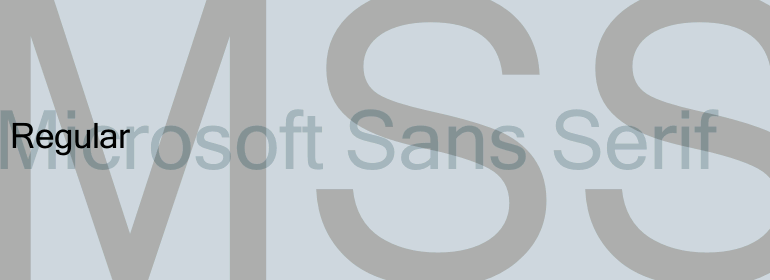
- #Html font family microsoft sans serif update
- #Html font family microsoft sans serif full
- #Html font family microsoft sans serif professional
While the J descends below the baseline is a subtle characteristic, the bold italics are playful and super experimental in terms of typography.
#Html font family microsoft sans serif professional
It’s a cool, professional yet straightforward font, with a considerable amount of quirk.
#Html font family microsoft sans serif full
Open Sans comes with a full extension of 10 different styles from light to extra bold. This font is initially designed by Steve Matteson, a typeface designer based in Louisville, Colorado. Here are 20 best sans-serif fonts for websites: 1. With more than 600 font families available to browse and choose from, the Google Fonts Library is a quick escape into the world of functional as well as aesthetic fonts.

Jonathan Neal offers an alternative method where system fonts are declared using benefit here is that you can declare the fonts once and then that becomes the thing you can on the font-family property instead of the long list of fonts each and every time.Just when the world was feeling a dip while choosing the right font without copyright issues, Google stepped up its game to fill the void with several free fonts for both commercial and personal usage. The limitation of the first method is that you have to call the full stack of fonts each time it’s used on an element and that can get cumbersome and bloat your code, depending on where and how it’s used. published a thorough write-up on the warnings it generates due to the leading font appearing to be a vendor prefix. Note: This method should only be used on the font-family property instead of the font shorthand. This snippet also drops support for certain types of emoji and symbols: /* System Fonts as used by Medium and WordPress */įont-family: -apple-system,BlinkMacSystemFont,"Segoe UI",Roboto,Oxygen-Sans,Ubuntu,Cantarell,"Helvetica Neue",sans-serif GitHub uses this method on their site, applying system fonts on the body element: /* System Fonts as used by GitHub */įont-family: -apple-system, BlinkMacSystemFont, "Segoe UI", Roboto, Helvetica, Arial, sans-serif, "Apple Color Emoji", "Segoe UI Emoji", "Segoe UI Symbol" īoth Medium and the WordPress admin use a similar approach, with a slight variation, most notably support for Oxygen Sans (created for the GNU+Linux operating system) and Cantarell (created for the GNOME operating system). One method for applying system fonts is by directly calling them on an element using the font-family property. Method 1: System Fonts at the Element LevelĬhrome and Safari have recently shipped “system-ui” which is a generic font family that can be used in place of “-apple-system” and “BlinkMacSystemFont” in the following examples.
#Html font family microsoft sans serif update
Additionally, it helps show that with new system versions, come new fonts, and thus the possibility of needing to update your font stack. The reason for the preface is that it shows how deep you may need to go back to support system fonts.

What are those system fonts? At the time of this writing, it breaks down as follows:

The beauty of “system” fonts is that it matches what the current OS uses, so it can be a comfortable look. That’s true of any “web safe” font, though. Defaulting to the system font of a particular operating system can boost performance because the browser doesn’t have to download any font files, it’s using one it already had.


 0 kommentar(er)
0 kommentar(er)
